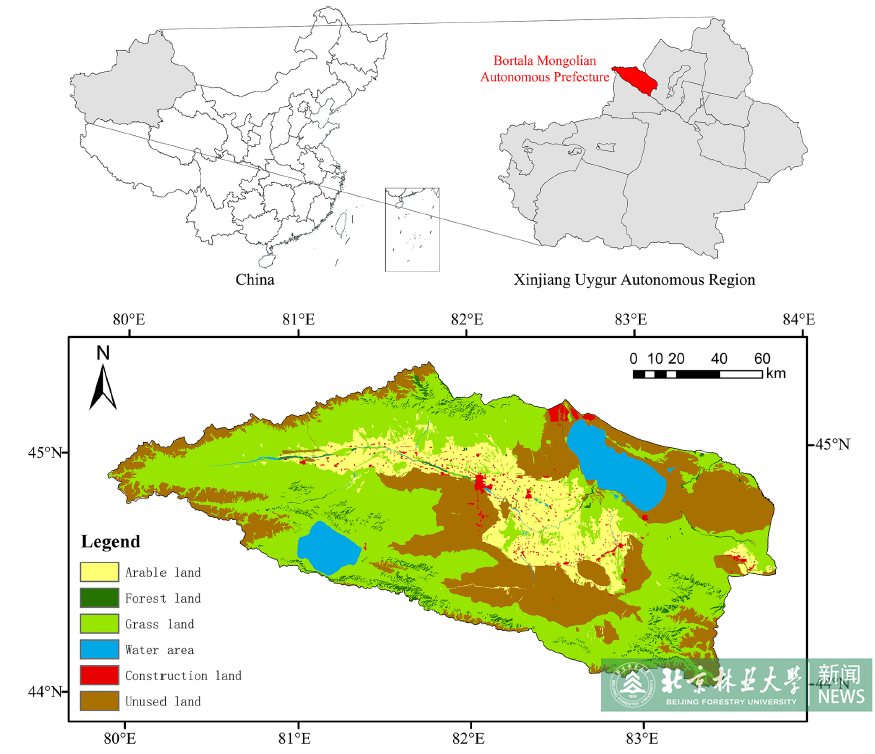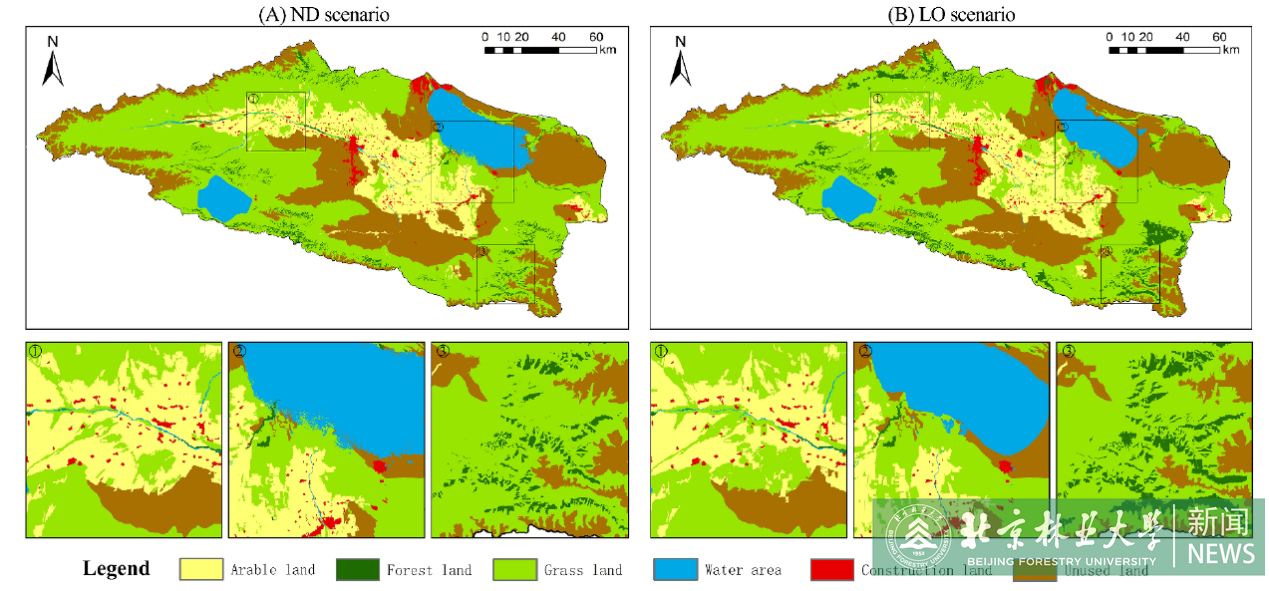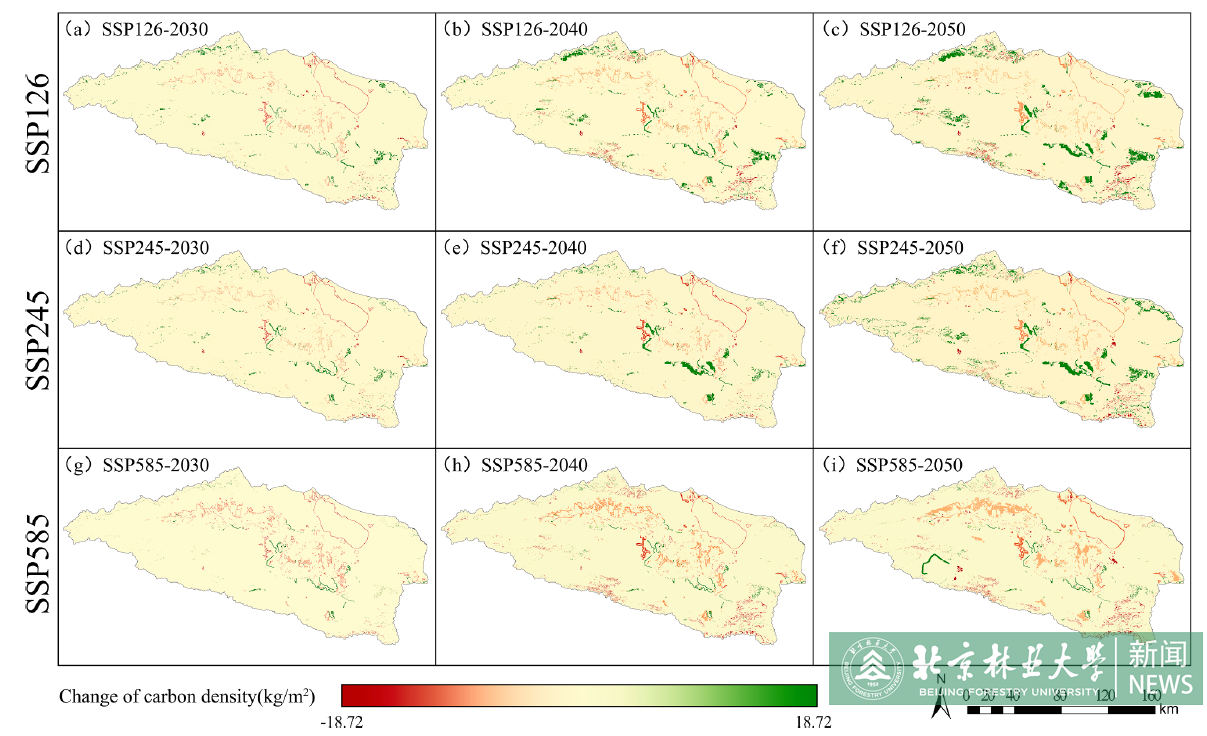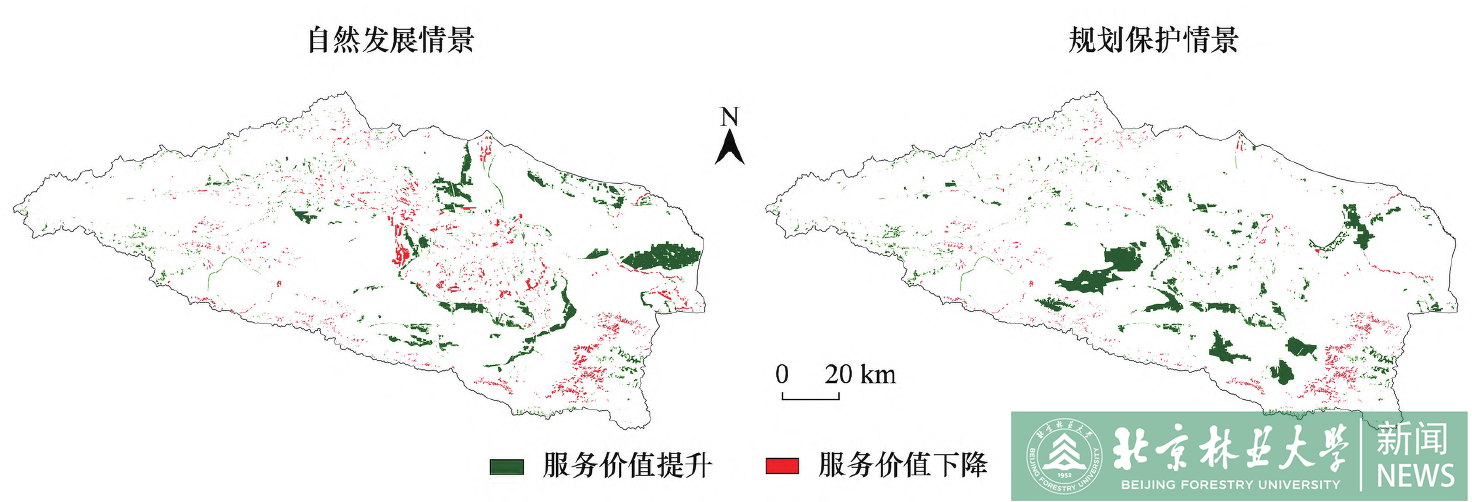Latest news
With the advancement of China's ecological civilization, how to scientifically allocate limited space resources and rationally balance ecological protection and economic development has gradually become a hot issue for policymakers and scholars.
The team of Professor Li Qiang and Professor Lin Qing from the College of Landscape Architecture conducted a series of in-depth studies in Bortala Mongol Autonomous Prefecture in Xinjiang. Aiming at the limitations of previous studies on land assessment that emphasize on ecological functions and pay little attention to the impact of future urban development, this paper integrates multidisciplinary model tools to generate patch-generating land use simulation (PLUS) from the perspective of ecological protection and urban development balance, realizing the scientific simulation and dynamic assessment of ecological functions under various scenarios of future urban development, which provides a more reasonable basis for land evaluation of future urban development planning and decision-making.

Location of the study area and LULC in 2020
In this study, a framework that combined ecological footprint modeling, BPNN, MOGA, and the PLUS model was proposed to optimize LULC structure and simulate LULC distribution patterns under multiple scenarios by assessing dynamic historical changes in urban development sustainability and accurately predicting future changes in EF.

Simulated LULC distribution pattern results
An integrated framework that couples the SD, PLUS, and InVEST models to simulate changes in LUCC and CS at the city level under different SSP-RCP scenarios with high accuracy was proposed in the research, and dynamic simulation of land use change and assessment of carbon storage based on climate change scenarios at the city level were carried out on the base. The framework established in this study provides new insights that could help stakeholders in making management decisions; this framework could also help China achieve its “carbon neutrality” goal and improve ecosystem services in other cities.

CS Distribution Change in each scenario compared with 2020
In addition, the study further found out that based on the ecological zoning construction method and the PLUS model, the whole process analysis and research framework of "evaluation-planning-assessment" can be systematically constructed to balance regional ecological protection and development. With the evaluation and comparison of the value of ecosystem services, the benefit evaluation of different planning and design schemes can be realized, so that the research can be better applied to the practical application.

Identified at-risk and high-potential areas for sustainable development
From the perspective of future urban development, the above research explored the impact of land use scenario simulation methods on ecological function assessment and actual planning and design. New progresses were published on Sustainable Cities and Society (Q1 TOP, IF=10.696), Ecological Indicators(Q2 TOP, IF=6.263) and other academic journals in the titles of “A new approach to land use optimization and simulation considering urban development sustainability: A case study of Bortala, China”“Dynamic simulation of land use change and assessment of carbon storage based on climate change scenarios at the city level: A case study of Bortala, China” respectively. This work was supported by the National Natural Science Foundation of China (grant numbers: 32071833) and Beijing Forestry University Hot Track Project (grant numbers: 2021BLRD25).
Paper links:
https://www.sciencedirect.com/science/article/pii/S2210670722004486
https://www.sciencedirect.com/science/article/pii/S1470160X2101164X










